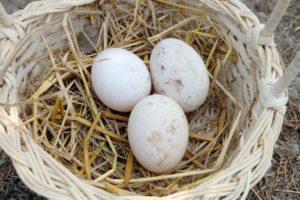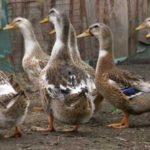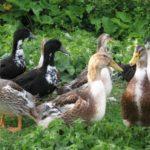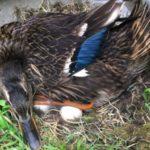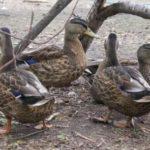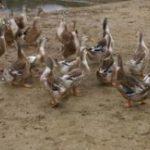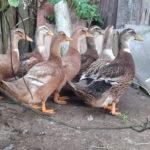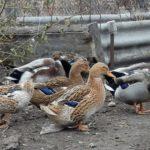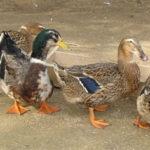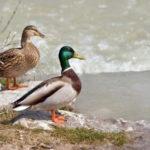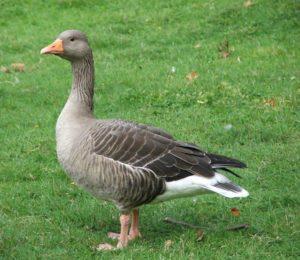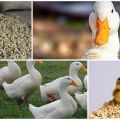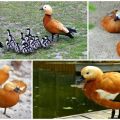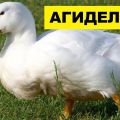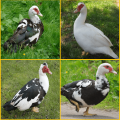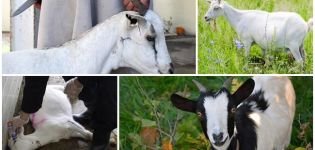Description and characteristics of ducks of the Bashkir breed, pros and cons
The Bashkir duck breed is distinguished by its rapid weight gain and good egg production. Birds begin to rush in the fourth month of life. The Bashkir women gain weight of three kilograms 60 days after birth. At two months of age, ducks can be slaughtered. If there is a reservoir near the walking area and if kept on high-quality feed, the birds practically do not get sick and do not die.
The history of the origin of the Bashkir duck
Bashkirki, or Bashkir ducks, are the most popular breed of domestic birds, bred in Russia in the early 2000s. First appeared on the territory of the Bashkir Blagovarsky breeding poultry plant. White Peking ducks were crossed with local species and hybrids to create a new meaty early maturing (broiler) breed.
The birds inherited rapid weight gain and high meat productivity from their Chinese relatives. Unlike the white Peking ducks, the Bashkirs have a more beautiful color. The birds quickly gained popularity and are now bred in many individual farms and large poultry farms.
Appearance and productivity of the breed
Ducks are called Bashkir if they have black (with snow-white breast) or variegated (white-gray-brown) plumage. The color of the drakes is always prettier. The males have a dark greenish tint head, there is a light collar on the neck, the plumage on the body and wings is rich brown, with white and blue-green spots. Description of the breed:
- the body is large, the wings fit tightly to the body;
- can fly;
- adult females weigh 3.7 kg, drakes 4.1 kg;
- the chest of the Bashkirs protrudes forward;
- neck - arched, short;
- the head is small, slightly flattened;
- beak wide, yellowish-orange, with a marigold at the end;
- paws - widely spaced, light orange, with membranes between the toes;
- plumage waterproof;
- gait - slow, rolling from side to side;
- females are very noisy, quack loudly;
- males only quietly squeak and hiss;
- birds tolerate frost well, can move on ice and snow.
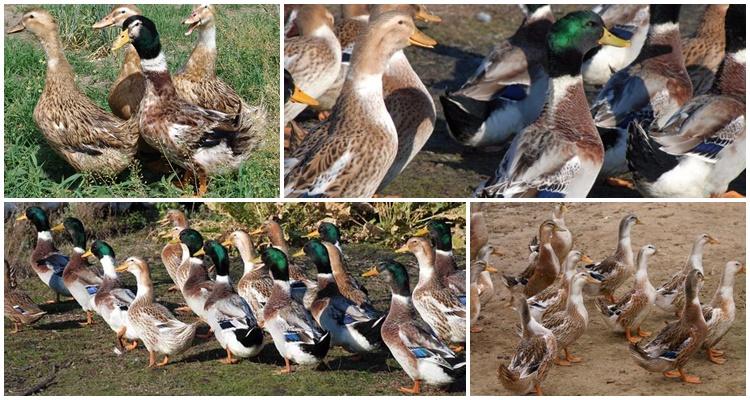
Productivity characteristics:
- early ripening;
- ducklings grow quickly, weigh almost 3 kg at 1.5-2 months;
- dietary meat to taste;
- 100 g of meat contains 2-4% fat;
- slaughter meat yield - 70%;
- birds are sent for slaughter at 2 months;
- meat does not have a specific smell;
- one duck can lay 210-270 eggs per year;
- the mass of one egg is 70-80 grams;
- begin to rush in the fourth month of life;
- shell beige; duck eggs are tastier than chicken eggs.
Birds are bred using an incubator or brood hen. Ducks sit on eggs for about a month. The female incubates ducklings for 28 days.All chicks usually hatch at the same time. Little ducklings have yellow fluff with dark or brown spots. At 1.5-2 months, the young look like adult birds.
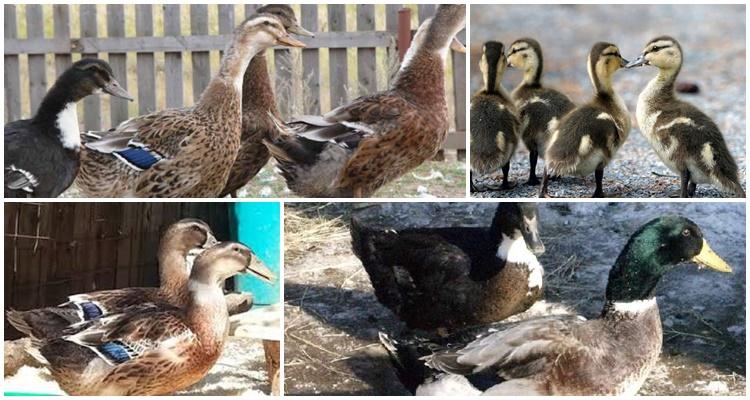
Varieties
Depending on the color of the plumage, Bashkir ducks are of the following types:
- colored - the color of the feathers is motley white-gray-brown with blue and green feathers;
- black white-breasted - black plumage with a green tint on the head, dark on the back and wings, white breast;
- white (ducks are similar in color to mulard) - white color dominates in the plumage.
Pros and cons
Conditions of maintenance and care
Bashkir ducks can be kept in cages, pens, poultry houses, along with chickens and geese. A separate room or a separate corner is allocated for the Bashkirs. It is not recommended to keep birds of different ages together. The house should have doors, small windows near the ceiling, a ventilation system, and a light bulb at the top. The lights are turned on only in the evening during winter. It is desirable that daylight hours are at least 10-12 hours. All year round, in the room where the Bashkirs are kept, the temperature is maintained at 14-21 degrees Celsius.
Bashkir ducks sleep on the floor (three adults per square meter), on a bed of straw. It is advisable to clean the house daily. Nests (low boxes with straw) for females are recommended to be placed in the semi-darkness. It is advisable not to install feeders and drinkers in the room where ducks sleep and rush.

It is recommended to set up a fenced walking area near the house. In summer, birds can be outside all day, nibbling grass (clover, alfalfa, dandelions). On the walking area, it is recommended to install a feeder and a drinker nearby. Ducks eat food and drink water immediately. When raising Bashkirs for meat, it is desirable that the birds have access to a reservoir.
If this is not possible, you can put a wide container of clean water on the walking area.
In order to raise large and healthy Bashkirs, you need to keep the birds clean, provide them with access to a reservoir and feed them at least three times a day. You can slaughter Bashkir ducks in the second month of life.
How to feed the birds?
Bashkir ducks have a faster metabolism than chickens. Bashkirs do not eat so much, but they gain weight well. Adult birds are fed 3-5 times a day. In the morning, the ducks are given wet mash, in the afternoon - finely chopped root crops (fodder beets, pumpkin, carrots) and compound feed. In the evening - crushed grain mixtures (wheat, corn, barley, oats). During the day, birds can nibble grass (clover, alfalfa), eat insects and duckweed in the pond.
It is advisable to diversify the diet of Bashkir ducks with pharmacy vitamins and minerals, feed yeast, fish and meat-and-bone meal, chalk, salt, sand, and crushed legumes. Birds gain weight quickly on bread and boiled potatoes. In winter, Bashkir ducks can be given finely chopped silage, hay chopped.
In addition to feed, one bird needs at least two liters of drinking water per day. Bashkirs are usually raised up to 2-3 months and sent to the slaughter. If you plan to leave the ducks for breeding, then they stock up on feed (root crops, crushed grain, mixed feed, hay) for the winter. After three months, Bashkir women, with regular three meals a day, become very fat.
Breeding Bashkir ducks
There are three options for breeding Bashkirs: buying small ducklings on the market, brooding eggs or placing eggs in an incubator. A more budget-friendly method is to breed birds with the help of a female.During incubation and raising of offspring, the mother duck should be in a separate room. In a poultry house intended for rearing young animals, you can put a feeder and drinker. Chicks are born on the 28th day.
Bashkir ducklings hatched with the help of an incubator in the first weeks of life are kept in a cardboard box in a room with an air temperature of 30 degrees Celsius. They should live separately from adult birds. Gradually, the temperature of the content is lowered to 20 degrees Celsius.
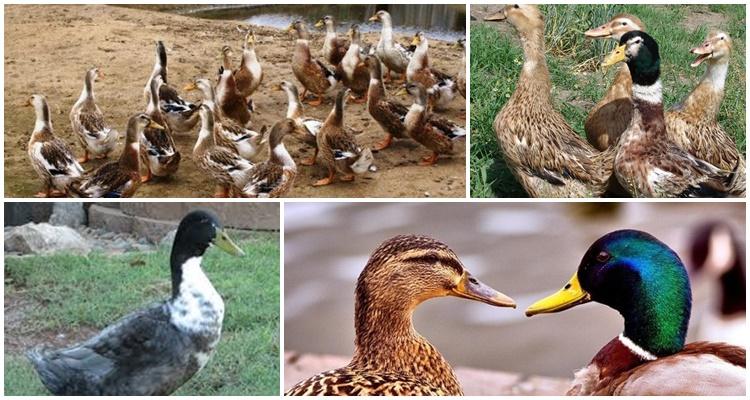
It is desirable to feed the Bashkir ducklings 30 minutes after hatching. Birds can be given kefir, yogurt, crushed boiled egg, fresh cottage cheese. Young animals are fed 6-8 times a day. It is recommended to make sure that the feed in the troughs does not sit for a long time and does not spoil.
In the second week of life, Bashkir ducklings are fed with special (starter) compound feed, wet mash of crushed grain, boiled potatoes, chopped herbs, and finely chopped root vegetables.
In good warm weather (at an air temperature of 20 degrees Celsius), the growing chicks should be outside every day, nibbling the grass. They can swim in a reservoir only after the first month of life. It is recommended for ducklings to add liquid pharmacy vitamins, mineral supplements, antibiotics to drinking water to prevent infectious diseases.
Diseases and methods of dealing with them
If Bashkir ducks from the moment of birth and throughout their lives are provided with proper care and good nutrition, then they will not get sick. The main thing is that the birds are not kept on a dirty litter, and they have access to a reservoir.
In the diet of ducks, green food and finely chopped vegetables must be present. Grain, in order to prevent digestive problems, is recommended to be given in crushed form.
The main diseases of Bashkir ducks and treatment:
- bacterial infections and coccidia - immediately after hatching, in the first 5 days of life, the ducklings are soldered with a solution of the drug "Trisulfone" (1 gram of the drug per liter of liquid);
- viral hepatitis - in unfavorable areas, they are vaccinated on the 2nd day of life and revaccination on the 60th day;
- vitamin deficiency, lack of vitamins, retardation of development - from 6 to 10 days of life, ducklings are drunk with the drug "Biosupervit" (1 ml of the product per three liters of water);
- bacterial intestinal diseases - for ducklings from 7 to 15 days of life, once a day, the antibiotic "Biovit 80" is added to the wet mash at the rate of 6 grams per feed for 100 chicks;
- parasites (helminths, ticks, lice) - on the 41st day the life of the ducklings is soldered with the preparation "Promectin" (1 ml per liter of water).
To prevent diseases, it is desirable to carry out preventive and sanitary measures. The main thing is to keep the birds in a clean house. Before placing the young, the room must be disinfected with bleach, washed, and the walls whitewashed with lime. It is recommended to lay only straw on the floor. It is advisable to change the bedding every day. If there are rodent holes in the house, they must be concreted. In the walking area and in the room where Bashkir ducks are kept, it is recommended to set up traps for flies and ants.
